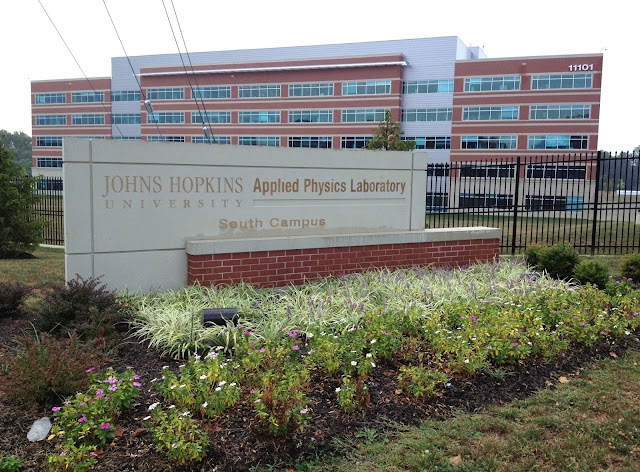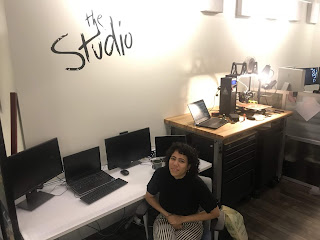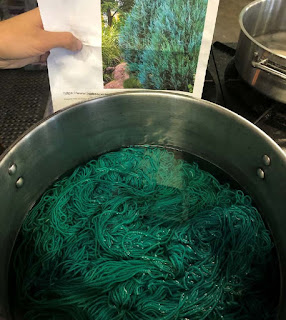My name is Natalie Hawkins, I am a senior at Maryland Institute of Art studying Graphic Design. This semester I had the privilege to intern at the Johns Hopkins Applied Physics Lab. The Applied Physics Lab is a lab of over 6,000 people. According to their website they “Solve complex research, engineering, and analytical problems that present critical challenges to our nation.”

When I applied to the Physics Lab I was not familiar with the company. I found the listing on the MICA network. Out of all of the internships I applied for, I was most qualified for this one. This internship, like any graphic design internship, required a healthy knowledge of the Adobe Suite. They were also looking for someone who was familiar with Blender which is a 3D modeling and animation program. I had taught myself how to use blender last year. I sent them a Resume, small cover letter, and a link to my online portfolio. After I applied I received an email response from them fairly quickly. I set up a phone interview with Andrew Rhine who would later become my supervisor. The phone interview went well. I learned more about the Lab and what kind of work they do. Andrew was kind to ask if I was alright working with the military and army, probably because had a lot of social change and activism work in my portfolio. I hesitated for a bit but once he mentioned what the pay was I ended up taking the job! Pay was very important to me regarding work and internships. I come from a middle income family and support myself by paying rent and my own expenses so I was really looking for an internship that would pay me. I was offered the job immediately after one phone interview.
The applied physics lab has over 6,000 full time employees spread over a campus with over 30 buildings. Everyone is strategically divided into sectors (there are maybe 7 or 8?), and then within each sector there are different groups. The groups can range from having 5 to 200 people per group. I work with a graphics team that makes graphics for ONE sector. Our team is comprised of 9 people including me. Everyone has their specialty, some are more skilled with powerpoint templates, some are more skilled with 3D modeling and animation, and some are experts with illustration & posters. Andrew Rhine is our section supervisor. There are some days where I don’t even see him at all because he is in so many meetings! He tries to balance his work between supervising and managing the team while still doing high level graphics work. I know he takes pride in his group and all of the work that the team produces.
I work in a very classified environment. I can’t really discuss all of the work I do. The applied physics lab is a high security place, and a lot of the work that is done for clients is confidential. I don't think that the work that I do is extremely sensitive but as a general rule of the physics lab we cannot discuss or talk about the work that we do outside of the Lab. I have to swipe my badge into a turnstile every morning and sometimes I have my bag searched.

I am most proud of my most recent evaluation. My supervisor took the time to go over the MICA evaluation he had to do with me. He had nothing negative to say! They all love me, my creativity, and my drive. I really appreciate that I am appreciated there. I have even been offered a full time position when I graduate!
The new skills that I’ve acquired are heavily related to customer service and generally how to act and work with others in a professional field. Working with 9 coworkers that all have been in the business is great. They are eager to answer all of my questions and educate me on how to interact with clients and other coworkers. I feel so much more confident now working with others in any professional setting. I’ve been told that a strength of mine is communication, I am good at communicating my availability. I’ve also learned a lot about time management and how to balance, school, work, and my other job! (+ free lance work) This has clarified my career goals in that I’ve realized that I would like to be challenged. I like the work that I do and I like working with graphic designers but I think that the work that I do is a bit dull and repetitive. I would be happiest with a job that will challenge me everyday and give me more of a variety of work. I am extremely grateful for the opportunity to work at the Applied Physics Lab, and appreciate all that I’ve learned there.
 I was granted the opportunity to work with Jay Hall Carpenter for my internship and I found out about him in my figure sculpture class, after talking to Robert Copskey and Joe Greene, one of our sculpture models. They both mentioned Jay's name to me a few times and told me to consider reaching out to him since I was very interested in figurative sculpture. I found his contact information through his website and sent him an email with my resume and images from my portfolio to express my interest in doing an internship at his studio.
I was granted the opportunity to work with Jay Hall Carpenter for my internship and I found out about him in my figure sculpture class, after talking to Robert Copskey and Joe Greene, one of our sculpture models. They both mentioned Jay's name to me a few times and told me to consider reaching out to him since I was very interested in figurative sculpture. I found his contact information through his website and sent him an email with my resume and images from my portfolio to express my interest in doing an internship at his studio.  A few days later, he responded asking me to come into the studio for an interview. Jay agreed to take me on as an intern. I found out that he was working on a very large monument. He was making a sculpture of three life-size women. He was sculpting the women responsible for the cure for Whooping Cough for the University of Michigan State.
A few days later, he responded asking me to come into the studio for an interview. Jay agreed to take me on as an intern. I found out that he was working on a very large monument. He was making a sculpture of three life-size women. He was sculpting the women responsible for the cure for Whooping Cough for the University of Michigan State. I found that through this internship I was able to acquire knowledge in how a professional artist’s studio works. Through experiencing the entire process of making a significant monument, I found myself believing more and more that it is possible to have a successful career as a sculptor. This internship has opened my eyes to a few more sculptural career paths and I’ve greatly appreciated my time with Jay Hall Carpenter.
I found that through this internship I was able to acquire knowledge in how a professional artist’s studio works. Through experiencing the entire process of making a significant monument, I found myself believing more and more that it is possible to have a successful career as a sculptor. This internship has opened my eyes to a few more sculptural career paths and I’ve greatly appreciated my time with Jay Hall Carpenter.
















